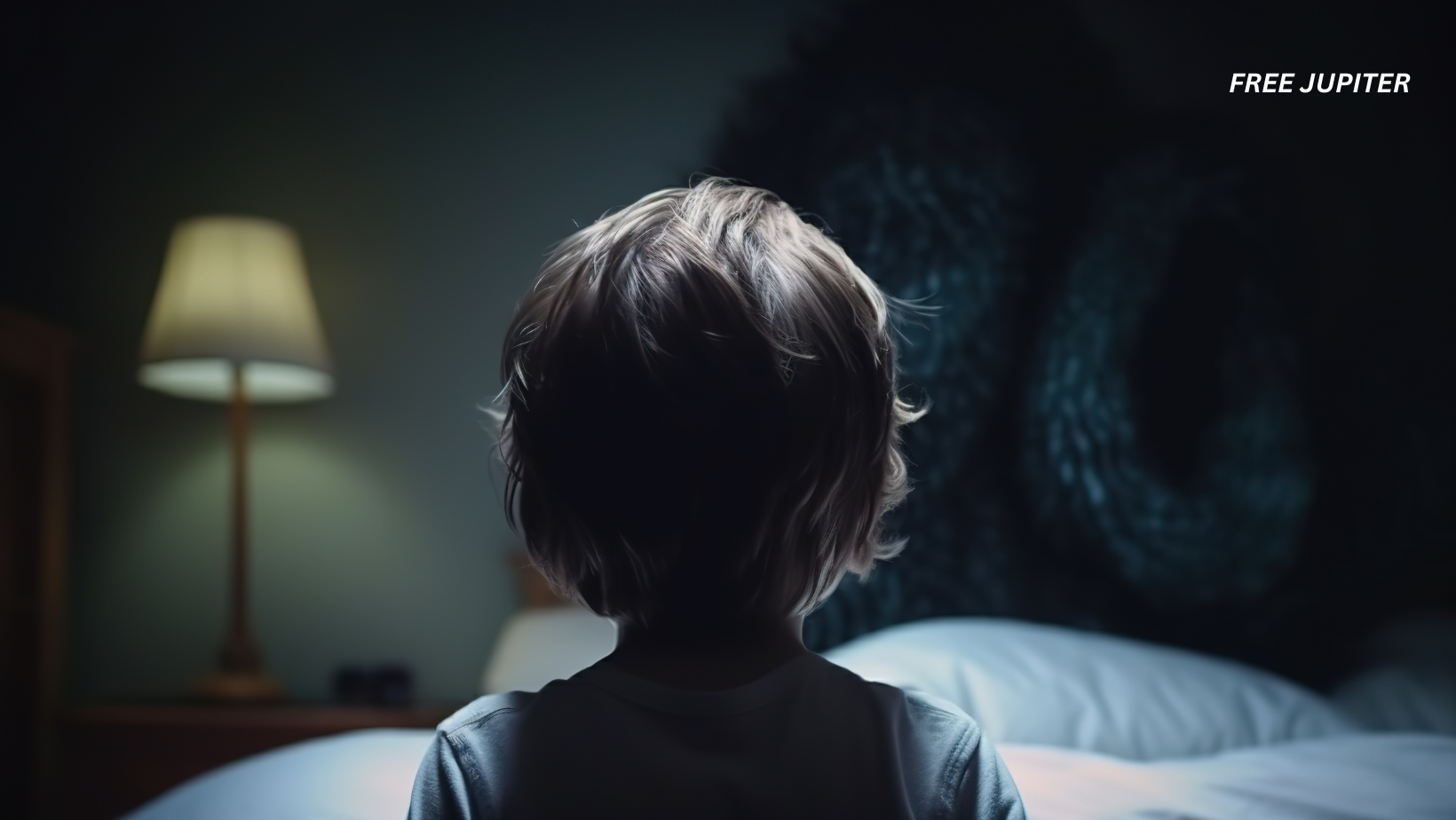Friendly Note: FreeJupiter.com shares general info for curious minds 🌟 Please fact-check all claims—and always check health matters with a professional 💙
Fear is one of our oldest survival tools. It’s that gut reaction that tells us to duck when something flies at our face, or to freeze when we hear a strange noise in the dark. But here’s the twist: scientists say that out of the many things that spook us—spiders, public speaking, clowns—only two fears are hardwired into us from birth. Everything else? We pick that up as we go.
The Fear Factory: Born With Two Settings
According to developmental psychology, babies enter the world with just two built-in fears: a fear of falling (or heights) and a fear of loud noises. That’s it. No monsters under the bed, no fear of rejection, no dread of airplane turbulence—those all come later.
Let’s take a closer look at these two primal fears and how the rest sneak into our minds along the way.
Fear of Heights: Falling Is Not Fun
Even though newborns can’t talk or walk, they already seem to have a built-in resistance to heights. Researchers tested this with the classic “visual cliff” experiment. Imagine a glass table with a checkerboard pattern on one side and a steep drop visible through the clear glass on the other. Babies around six months old often refused to crawl across the see-through side, even though it was perfectly safe.
Why? It seems they instinctively understood that a big drop could be bad news. From an evolutionary standpoint, this makes total sense. Early humans who avoided high ledges were less likely to take a fatal tumble—and more likely to pass on their cautious genes. So the fear of heights likely evolved as a survival strategy.
What’s fascinating is that this fear kicks in even if a baby has never fallen before or seen anyone else do so. It’s just… there. No traumatic memory required.
Read more: If You Overthink Everything, These 11 Challenges Will Feel Too Real
Fear of Loud Noises: Startled From the Start
The second inborn fear is loud, sudden noises. You’ve probably seen a baby react to a door slamming or a dog barking unexpectedly—they flinch, stretch out their arms, or start crying. This is called the Moro reflex, and it’s basically the baby version of “What was THAT?!”
Again, it’s a survival thing. Loud noises often signal danger—think thunderstorms, growling animals, or crashing branches in a forest. Our nervous system is programmed to snap to attention when things get noisy, just in case it means we’re in trouble.
This reflex isn’t something babies learn; they do it even when they’ve never heard that sound before. It’s instinctual, automatic, and universal.
The Rest of Our Fears: Homemade and Hand-Me-Down
So what about all the other fears? Spiders? The dark? Being alone? Speaking in public? Rejection? Airplanes?
These fears are not part of our biological starter kit. Instead, they’re learned—picked up from life, experiences, and even other people.
Let’s look at how that happens.
1. Fear by Observation: Monkey See, Monkey Fear
One of the most common ways we learn to be afraid is by watching someone else react to something.
Let’s say a toddler sees their parent scream when a dog approaches. The child may not have had a bad experience with dogs themselves—but now they’re watching a trusted adult panic. The brain quickly connects the dots: “That thing must be dangerous.”
This is called observational learning, and it’s incredibly powerful. It’s how many fears are “passed down” from generation to generation without anyone realizing it. If your mom was terrified of lightning, there’s a good chance you might grow up flinching during storms—even if you’ve never had a bad experience yourself.
2. Fear Through Experience: Once Bitten, Twice Shy
Some fears are forged in the heat of a bad moment. If you’ve ever:
- Gotten lost in a crowded mall as a child
- Been stuck in an elevator
- Felt humiliated in front of a classroom
…then you know how one stressful event can turn into a lifelong sensitivity.
This is especially true for kids, whose brains are still developing and are incredibly impressionable. A single traumatic event can cause the brain to link that specific situation with fear, locking it in place.
3. Fear From Repetition: Reinforced by Routine
Fear can also be reinforced over time. If you’re constantly scolded for speaking up in class, your brain might start to associate talking in front of people with punishment. After a while, just the thought of public speaking can make your stomach twist.
The more often a fearful reaction is repeated, the stronger the neural pathways in the brain become. Eventually, that fear becomes automatic—even if it’s irrational.
4. Fear From Culture and Media: Scary Stories Stick
The world around us plays a big role too. News headlines, movies, stories, and cultural taboos all shape our mental landscape.
You might fear plane crashes even if you’ve never flown—just from seeing one too many disaster movies. Or you might fear ghosts because your grandma told spooky bedtime stories.
Cultural fears vary widely. In some societies, speaking up is frowned upon. In others, it’s expected. Some cultures fear the “evil eye,” while others worry about curses or shame.
The point is: many of our fears are not universal. They’re shaped by the world we grow up in.
Read more: Scientists Uncover Hundreds of Promising Antibiotic Candidates in Snake and Spider Venom
How the Brain Locks In Fear
Our brain has a dedicated fear center called the amygdala. It’s about the size of an almond and plays a major role in emotional processing, especially when it comes to threats.
- You encounter a potential threat (real or imagined).
- The amygdala goes on high alert and signals your body to get ready.
- If the situation feels dangerous enough, your brain records it.
- Next time you encounter something similar, the brain remembers and reacts faster.
This process is why phobias—intense, irrational fears—can feel so overwhelming. The brain treats the fear as real and urgent, even if logic says otherwise. It’s like having a smoke detector that goes off every time someone burns toast.
How the Brain Builds (and Keeps) Fear
Deep inside the brain, a little almond-shaped area called the amygdala is in charge of processing emotions—especially fear. When something feels threatening, the amygdala sends out a flurry of signals, preparing your body for fight or flight. This is great when you’re actually in danger… but not so helpful when you’re just nervous about giving a speech.
Over time, the brain starts connecting certain experiences with emotional reactions. If enough negative moments pile up around a particular trigger—like speaking in front of others, or walking through a dark alley—that fear becomes reinforced. The brain starts treating those situations as threats, even if they aren’t really dangerous anymore.
This is how phobias form. They’re not just in your imagination—your brain has wired those fears into you, often without asking for your opinion.
The Good News: Fears Can Be Unlearned
Here’s the upside: just because most fears are learned doesn’t mean they have to be permanent.
Thanks to advances in mental health treatments, especially cognitive behavioral therapy (CBT), many people can rewire their brains to respond differently to fear triggers. CBT works by gradually exposing people to their fears in a safe, controlled way, helping them reframe their thinking and lower the emotional response over time.
It’s like teaching your brain that the dog, the dark, or the looming deadline isn’t actually out to get you.
Read more: Wise Minds Know When to Stay Silent—Here’s What They Don’t Reveal
In Summary: Fear Isn’t Always the Enemy
Fear is an essential part of being human. It helps keep us alive. But it’s also a mental sponge, soaking up influence from the world around us. While we come into this world afraid of just two things—falling and loud noises—life has a way of adding many more to the list.
Understanding which fears are natural and which are learned can help us be a little kinder to ourselves. After all, it’s not always about being fearless. Sometimes, it’s about recognizing which fears serve us—and which we’ve accidentally picked up along the way.










